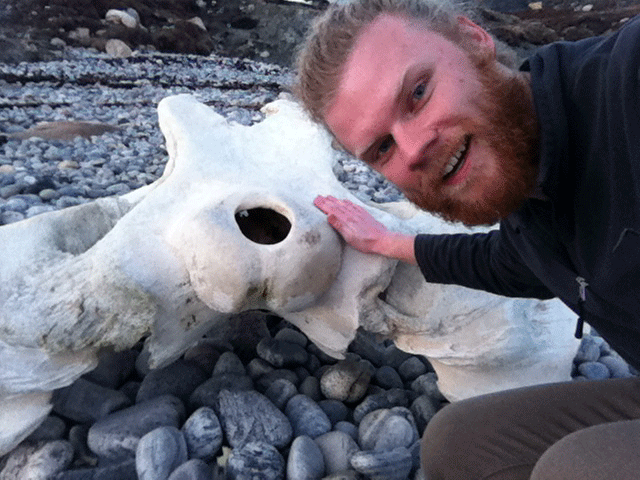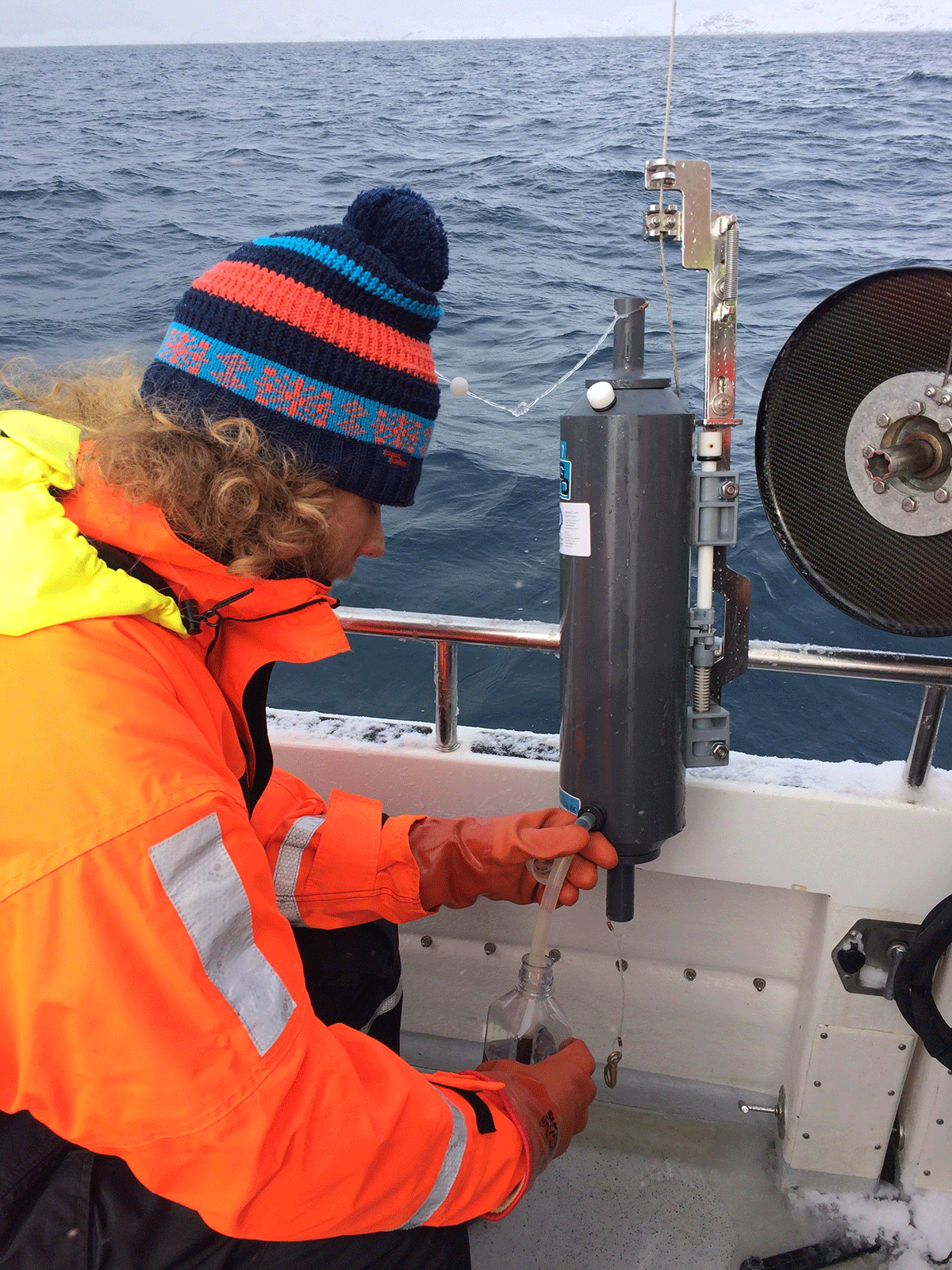
William Dobbins, an intern in Dr. Jeffrey Krause’s lab, recently returned from a two month stay at the Greenland Institute of Natural Resources (GINR) in Nuuk.
With collaborators from King Abdullah University of Science and Technology in Saudi Arabia, and GINR in Nuuk, Dobbins collected water from the Nuuk Kangerlua fjord and measured the abundance of phytoplankton, silicon, and other nutrients.
"In addition, we took a subset of phytoplankton filled water and conducted a series of experiments in which we manipulated the amount of silicon available to the phytoplankton and measured the response of the diatom community," Dobbins said. "If, at some points, silicon was limiting growth, we would expect to see diatoms increase in density as a response to additional silicon. If another nutrient was the limiting factor, we would expect a more subdued or no response to an increase in silicon availability."

Dr. Krause is interested in the role that silicon, a critical nutrient for diatoms, plays in regulating the spring phytoplankton bloom in the large fjord that Nuuk borders. Diatoms are the most abundant phytoplankton in high latitudes and polar waters and are foundational to a variety of biological, chemical, and geological processes.
"Knowing the factors that limit diatom growth during this season when their biomass is high (called the "spring bloom") is critical to understand how this system functions," Dobbins explained. "But this baseline data will also help predict how diatoms ecological role may change with continued loss of the continued Greenland ice sheet/glaciers loss projected in the future."
Dobbin’s data, now being processed at the Dauphin Island Sea Lab, will help predict how the ecological role of diatoms may change with continued loss of the Greenland ice sheet and glaciers in the future.